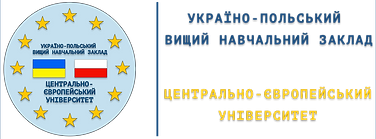About Ukraine
Ukraine has a long and proud history in terms of education. Ukrainian universities provide students with strong fundamental knowledge as they teach to look at the problem widely and find solutions conceptually.
The traditions of Ukrainian culture were attached to monasteries in Kiev, Chernigov, Putivl, and other places. In 1572 the first Russian printer, Ivan Fyodorov, arrived to Lviv and established printing house and published the first Bukvar (ABC-Book). By 1678 Ukraine had over 20 printing houses, which published educational literature and other books.

The Russian 1803-1804 educational reform brought about the formation of gymnasiums, as well as privileged educational institutions, lyceums, and Institutes for Noble Young Ladies. The latter emerged in Kharkov (1805), Poltava (1817), Odessa, and Kyiv. Initial professional education was provided by specialized institutions: Kiev Railway School, Kherson School of Commercial Navigation, and Yekaterinislav School of Gardening, as well as art and trade schools. Universities opened in Kharkov in 1805 and in Kyiv in 1834.
The new educational institutions reflected European patterns, but at the same time incorporated distinctive features based on the long-standing traditions of Slavic culture. After the Decembrist uprising in St. Petersburg (1825), which shattered the foundations of Russian czarism, great educational work was done in Kyiv by General M. F. Orlov. He headed a group called “Union of Welfare,” used his own money to organize schools of mutual education, and developed new curricula and methodological materials.
The secret Cyril-Methodius Society, founded in the 1840s at Kiev University and headed by N. I. Kostomarov, aimed at spreading education among different social groups. The members of the society opened schools for peasant children and worked hard to create and publish textbooks for them. The society included a revolutionary democratic group led by the national poet Taras Shevchenko.
The ideas of the French revolution of 1848 encouraged progressive educators to foster the teaching and use of the Ukrainian language in schools. The movement promoting education for common people and schools with Ukrainian as the language of instruction became especially strong in the 1850s.
The educational reform of the 1860s stimulated the establishment of new institutions, the introduction of comparatively progressive methods of teaching, and the admission of children from different ranks of society to primary schools. From 1877 to 1898 the number of schools grew from 1,112 to 3,179.
The 1905-1907 Russian Revolution encouraged the development of new progressive ideas. The organization Prosvita(Enlightenment), the All-Ukrainian Teachers Union, and the Kyiv Society for Public Kindergartens began their activities; free libraries opened in different cities; and a higher teachers training institute for female students was founded in Kyiv.
In western Ukraine, which was part of the Austro-Hungarian state, the educational opportunities for Ukrainians were scarce; the majority of the people were illiterate, and primary schools had only one grade. Most of the teaching was done in German, Polish, Hungarian, and Romanian; in 1911-1912, out of 134 general education schools only 11 had Ukrainian as the language of instruction. By 1914-1915 Ukraine (within its modern borders) had approximately 26,000 general education institutions, including 25,000 primary, 386 incomplete secondary, 577 complete secondary, and 88 specialized secondary schools for a total of 2,600,000 students.
By 1945-1946 there were over 28,000 general education schools with 5 million people. The deStalinization of the Soviet Union under Nikita Khrushchev had a profound influence on the political and cultural life in Ukraine. The content of education changed significantly. The transference to universal, compulsory, eight year schooling was completed by 1960-1961. The activities of the prominent teacher and scholar Vassily Suhkomlinsky, who made special emphasis on civil and ethical aspects of education, aroused great public interest, as well as sharp criticism from the Academy of Pedagogical Sciences. Sukhomlinsky, a school director, considered the child’s personality to have the highest value in the process of teaching and upbringing. He saw the main goal of education in the realization of the students’ inborn qualities, spontaneous reactions, and impulses. He also paid special attention to society as the context of education and included ethical categories in pedagogy.
Success in Ukrainian education drew attention of foreign students, since 1940 preparing was underway in Ukraine. Nowadays, Ukrainian graduates take leading positions in foreign companies spanning Asia, Africa and Latin America . You can see them among state officers, doctors, engineers etc. The end of world confrontation and establishment of Ukraine as an independent state opened new perspectives for Ukrainian education and its integration into the academic world.
Ukraine is home to over 800 institutes of higher education and has a varied economy, concentrated mostly in and around big cities such as Kyiv, Zaprozhye, Dnipro, Lviv and Odesa. It also has significantly lower tuition fees than many countries, both in Europe and worldwide. So, whether you’re a history buff, nature lover or a future entrepreneur, opportunities to study in Ukraine could be just what you are looking for.
Nineties are characterized by deep changes in the national system of education. The changes in structure and content of education started as the result of the development of new marketing relations. Labour market demanded new skill standards. Management, marketing, law, financing and computer engineering were among priorities. At the same time with the state sector private institutions had started to be developed. Foreign languages such as English, German, French, Spanish were the main part of the curriculum, that built favorable conditions for successful preparation to International Language exams.
Ukrainian universities take an active part in the work of European educational bodies as well as European Association of International Education. Ukraine was one of the countries that signed the convention on the Recognition of Qualifications Concerning Higher Education in Europe ( Lisbon, 1997). In 1999 the Parliament of Ukraine ratified the convention. Bilateral cooperation between Ukrainian and foreign universities is intensively developed. Ukrainian universities are active participants of the European Union Programme TEMPUS. Nowadays, popularity of Ukranian higher education is growing.

